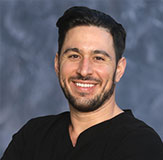Shoulder
Shoulder Instability
Shoulder instability is a chronic condition that causes frequent dislocations of the shoulder joint.
Causes
A dislocation occurs when the end of the humerus (the ball portion) partially or completely dislocates from the glenoid (the socket portion) of the shoulder. A partial dislocation is referred to as a subluxation whereas a complete separation is referred to as a dislocation.
Risk Factors
The risk factors that increase the chances of developing shoulder instability include:
- Injury or trauma to the shoulder
- Falling on an outstretched hand
- Repetitive overhead sports such as baseball, swimming, volleyball, or weightlifting
- Loose shoulder ligaments or an enlarged capsule
Symptoms
The common symptoms of shoulder instability include pain with certain movements of the shoulder; popping or grinding sound may be heard or felt, swelling and bruising of the shoulder may be seen immediately following subluxation or dislocation. Visible deformity and loss of function of the shoulder occurs after subluxation or sensation changes such as numbness or even partial paralysis can occur below the dislocation because of pressure on nerves and blood vessels.
Conservative Treatment
The goal of conservative treatment for shoulder instability is to restore stability, strength, and full range of motion. Conservative treatment measures may include the following:
- Closed Reduction: Following a dislocation, your surgeon can often manipulate the shoulder joint, usually under anesthesia, realigning it into proper position. Surgery may be necessary to restore normal function depending on your situation
- Medications: Over the counter pain medications and NSAID’s can help reduce the pain and swelling. Steroidal injections may also be administered to decrease swelling
- Rest: Rest the injured shoulder and avoid activities that require overhead motion. A sling may be worn for 2 weeks to facilitate healing
- Ice: Ice packs should be applied to the affected area for 20 minutes every hour
Surgery
When the conservative treatment options fail to relieve shoulder instability, your surgeon may recommend shoulder stabilization surgery. Shoulder stabilization surgery is done to improve stability and function to the shoulder joint and prevent recurrent dislocations. It can be performed arthroscopically, depending on your situation, with much smaller incisions. Arthroscopy is a surgical procedure in which an arthroscope, a small flexible tube with a light and video camera at the end, is inserted into a joint to evaluate and treat of the condition. The benefits of arthroscopy compared to the alternative, open shoulder surgery are smaller incisions, minimal soft tissue trauma, less pain leading to faster recovery.
Rotator Cuff Tear
The rotator cuff is a group of tendons in the shoulder joint providing support and enabling a wider range of motion. Major injury to these tendons may result in a tear of these tendons and the condition is called rotator cuff tear. It is one of the most common causes of shoulder pain in middle aged adults and older individuals.
Causes
Rotator cuff tears result from pressure on the rotator cuff from part of the shoulder blade (scapula) as the arm is lifted. It may occur with repeated use of the arm for overhead activities, while playing sports or during motor accidents.
Symptoms
Rotator cuff tears cause severe pain, weakness of the arm, and a crackling sensation on moving the shoulder in certain positions. There may be stiffness, swelling, loss of movements, and tenderness in the front of the shoulder.
Diagnosis
Your surgeon diagnoses a rotator cuff tear based on the physical examination, X-rays, and imaging studies, such as MRI. Rotator cuff tears are best viewed on magnetic resonance imaging (MRI).
Conservative Treatment Options
- Rest
- Shoulder sling
- Pain medication injection consisting of a steroid (cortisone) and a local anesthetic in the subacromial space of the affected shoulder to help decrease inflammation and pain
- Specific exercises
Surgery
Rotator cuff repair may be performed by open surgery or an arthroscopic procedure. In an arthroscopy procedure, space for the rotator cuff tendons will be increased and the cuff tear is repaired using suture anchors. These anchor sutures help in attaching the tendons to the shoulder bone. Following the surgery, you may be advised to practice motion and strengthening exercises.
Frozen Shoulder
Frozen shoulder, also called adhesive capsulitis is a condition characterized by pain and loss of motion in shoulder joint. It is more common in older adults aged between 40 and 60 years and is more common in women than men.
Causes
Frozen shoulder is caused by inflammation of the ligaments holding the shoulder bones to each other. The shoulder capsule becomes thick, tight, and the stiff bands of tissue called adhesions may develop. Individuals with shoulder injury, shoulder surgeries, shoulder immobilized for longer period, other disease conditions such as diabetes, hypothyroidism, hyperthyroidism, Parkinson’s disease and cardiac diseases are at risk of developing frozen shoulder.
Symptoms
Frozen shoulder may cause pain and stiffness and limit the movements of shoulder.
Diagnosis
Frozen shoulder condition can be diagnosed by the presenting symptoms and radiological diagnostic procedures such as X-rays or MRI scans.
Conservative Treatment
Conservative Treatment options include:
- Non-steroidal anti-inflammatory drugs and steroid injections for pain
- Physical therapy to improve your range of motion
- Sometimes heat may be applied to reduce pain
Surgery
Your surgeon may recommend Shoulder arthroscopy when the conservative treatment does not work. During surgery, the scar tissue will be removed and tight ligaments, if any, will be dissected. Following surgery physical therapy will be advised to bring full range of motion and strengthen the muscles.
Shoulder Impingement
Shoulder impingement is the condition of inflammation of the tendons of the shoulder joint. It is one of the most common causes of pain in the adult shoulder. The shoulder is a 'ball-and-socket' joint. A ‘ball' at the top of the upper arm bone, humerus, fits neatly into a 'socket’, called the glenoid, which is part of the shoulder blade, scapula. Shoulder impingement is also called as swimmer’s shoulder, tennis shoulder, or rotator cuff tendinitis.
Causes
Impingement results from pressure on the rotator cuff from part of the shoulder blade (scapula) as the arm is lifted. It is more likely to occur in young and middle aged people who engage in physical activities that require repeated overhead arm movements. The pain may be due to a "bursitis" or inflammation of the bursa overlying the rotator cuff or a "tendonitis" of the cuff itself. In some circumstances, a partial tear of the rotator cuff may cause impingement pain.
Symptoms
Individuals with shoulder impingement may experience severe pain at rest and during activities, weakness of the arm and difficulty in raising the hand overhead.
Diagnosis
Diagnosis involves physical examination by the doctor where in the doctor checks for the possible range of movements with the affected shoulder. X-rays and MRI scans may be ordered to see the injury and inflammation.
Conservative Treatment Options
Shoulder impingement can be treated with rest, ice packs, anti-inflammatory drugs, and avoiding the activities involving the shoulder. Physical therapy may be advised to strengthen the muscles and steroid injections may be given if pain persists.
Surgery
Arthroscopic surgery is recommended if the rotator cuff tendons are torn and to remove the bony spurs.

 Menu
Menu




